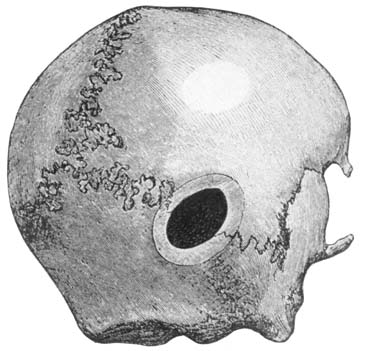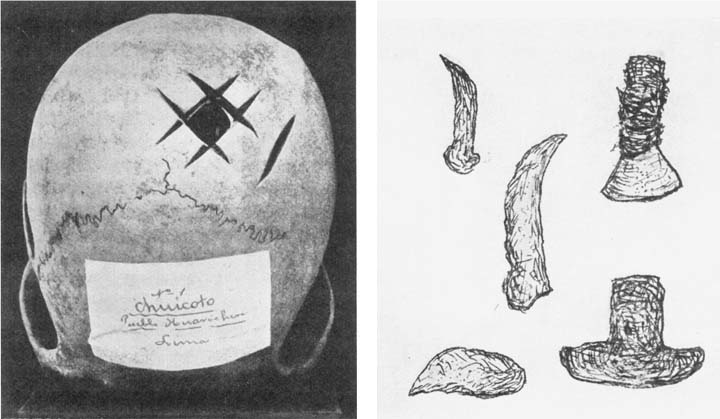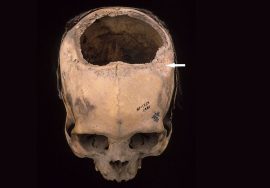
Trepanning
Trepanning is one of the earliest surgical operations knowns, and there is considerable evidence to show that it was practiced by primitive man in prehistoric times. The scraping of a hole in the cranium (Figure 1) at that remote period was probably carried out with the object of relieving pains in the head or epilepsy, and at the same time providing an exit for the disease demon or evil spirit and to allow its escape.

trepanning was practiced at an early period by the ancient Incas of Peru, who performed it with great dexterity. It is said that from 5 to 6 per cent of the ancient skulls excavated in Peru show that trepanning was resorted to, not only for therapeutic reasons to alleviate the effects of injury or cure disease, but also to obtain amulets to be worn as charms or to let evil spirits out or to allow good ones to come in.
The operation is still practiced by native medicine men among some tribes in South America in much the same manner as it was carried out in ancient times.

The patient’s head was held tightly between the surgeon’s knees-the former reclining and the latter sitting. An incision was then made in the scalp and a section of bone, approximately an inch square, removed from the skull (Figure 2).The instrument employed was a sharp piece of flint or hardened copper with a rough edge (Figure 3), which was used by rubbing the edge backwards and forwards along the bone. Sometimes the aperture was closed with a plate made from shell or other substance, although cases have been found in which the trepan opening was filled with a perfectly fitting diaphragm of lead [1].
References:
1 Thompson, C.: ‘The evolution and development of surgical instruments’, British Journal of Surgery, 1938, 25, (99), pp. 479-486

